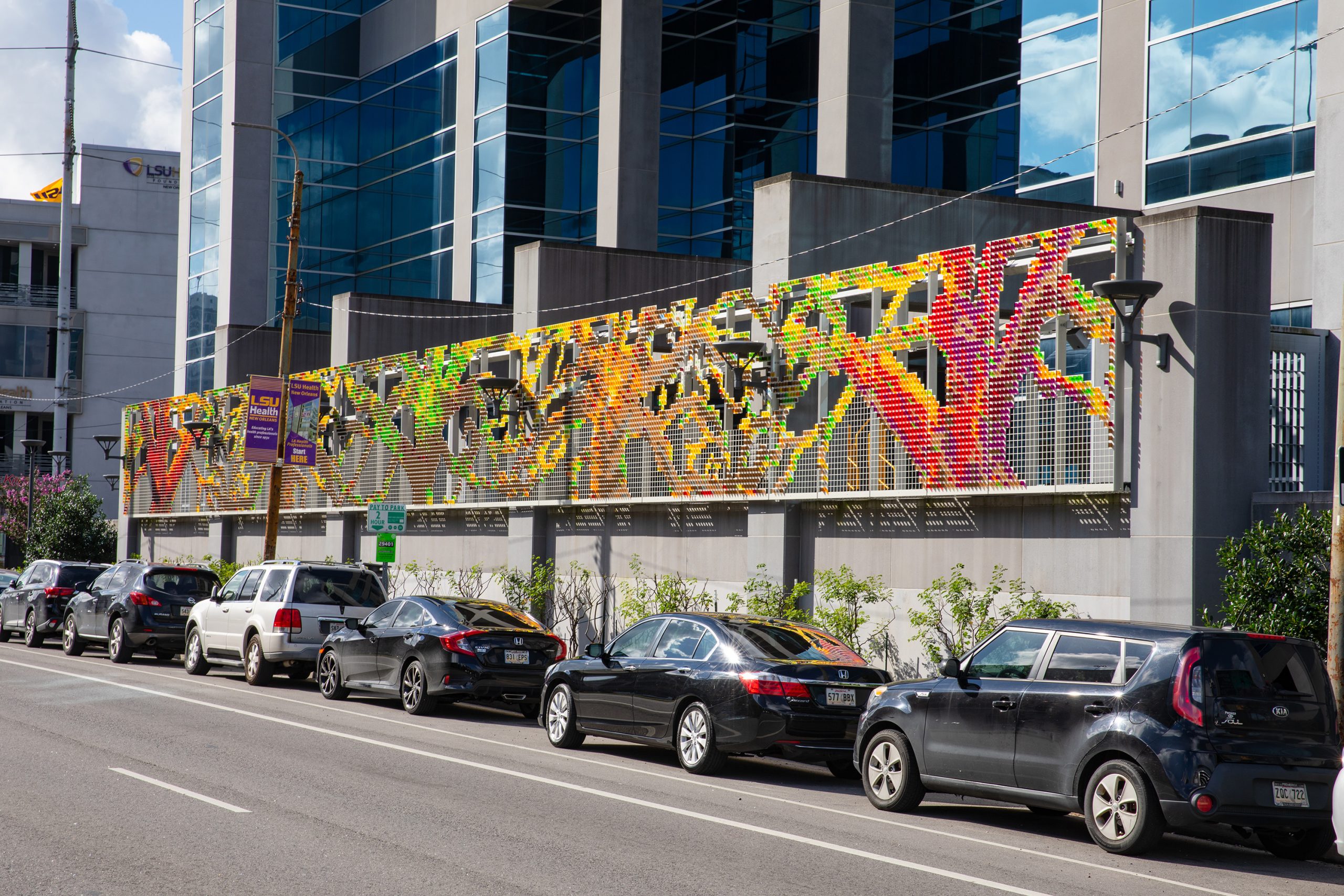
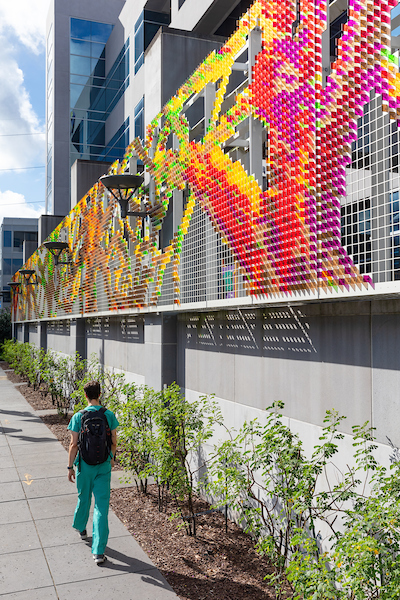
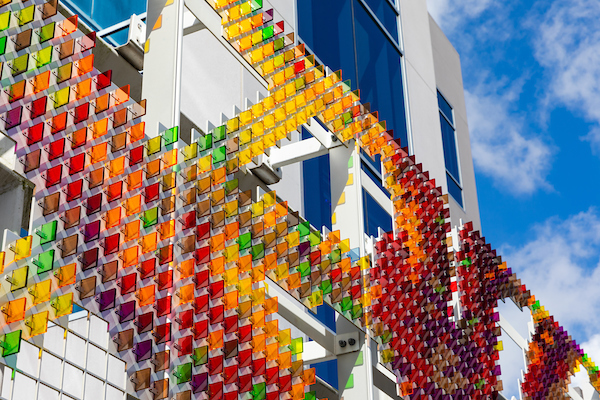
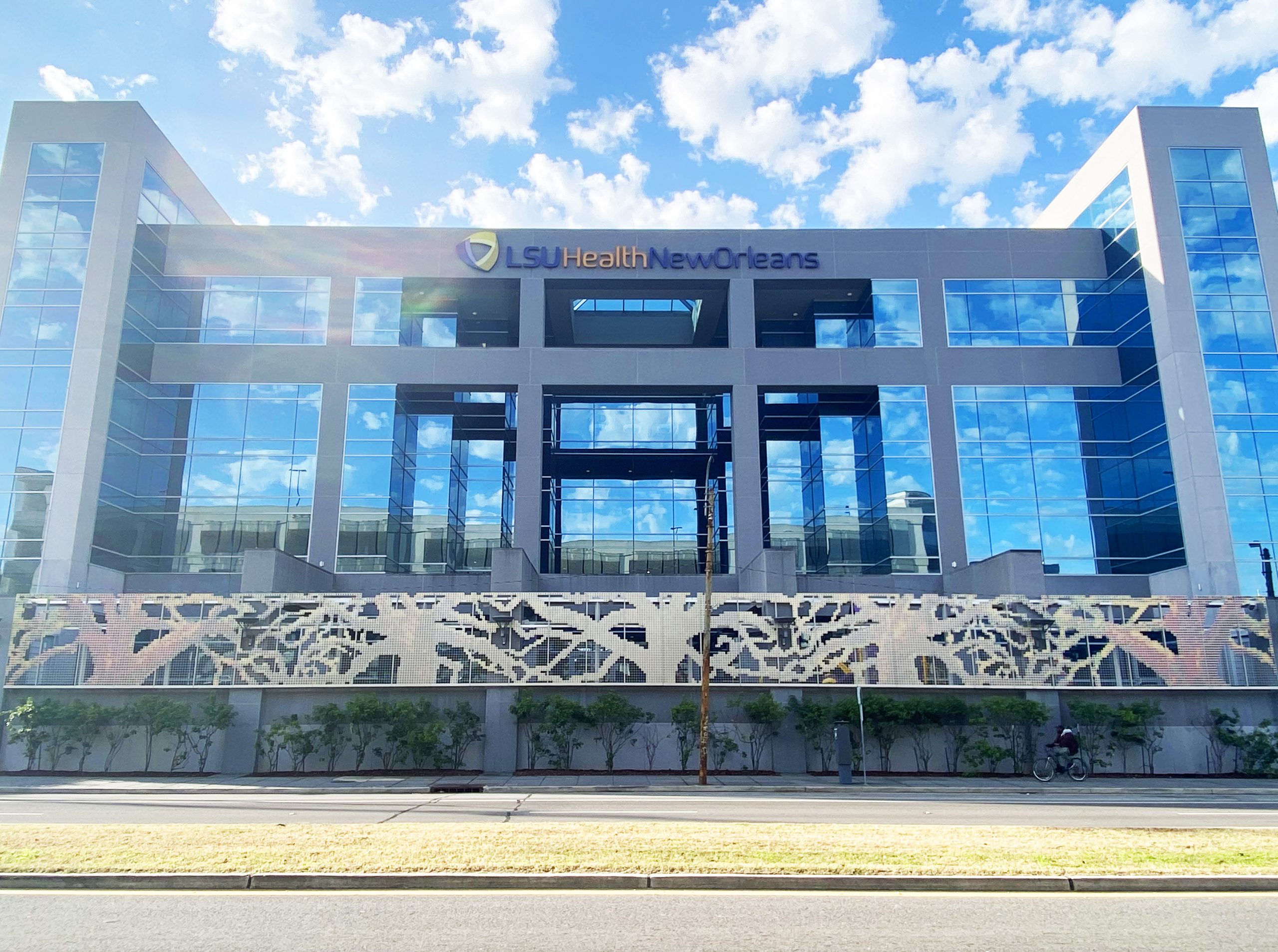
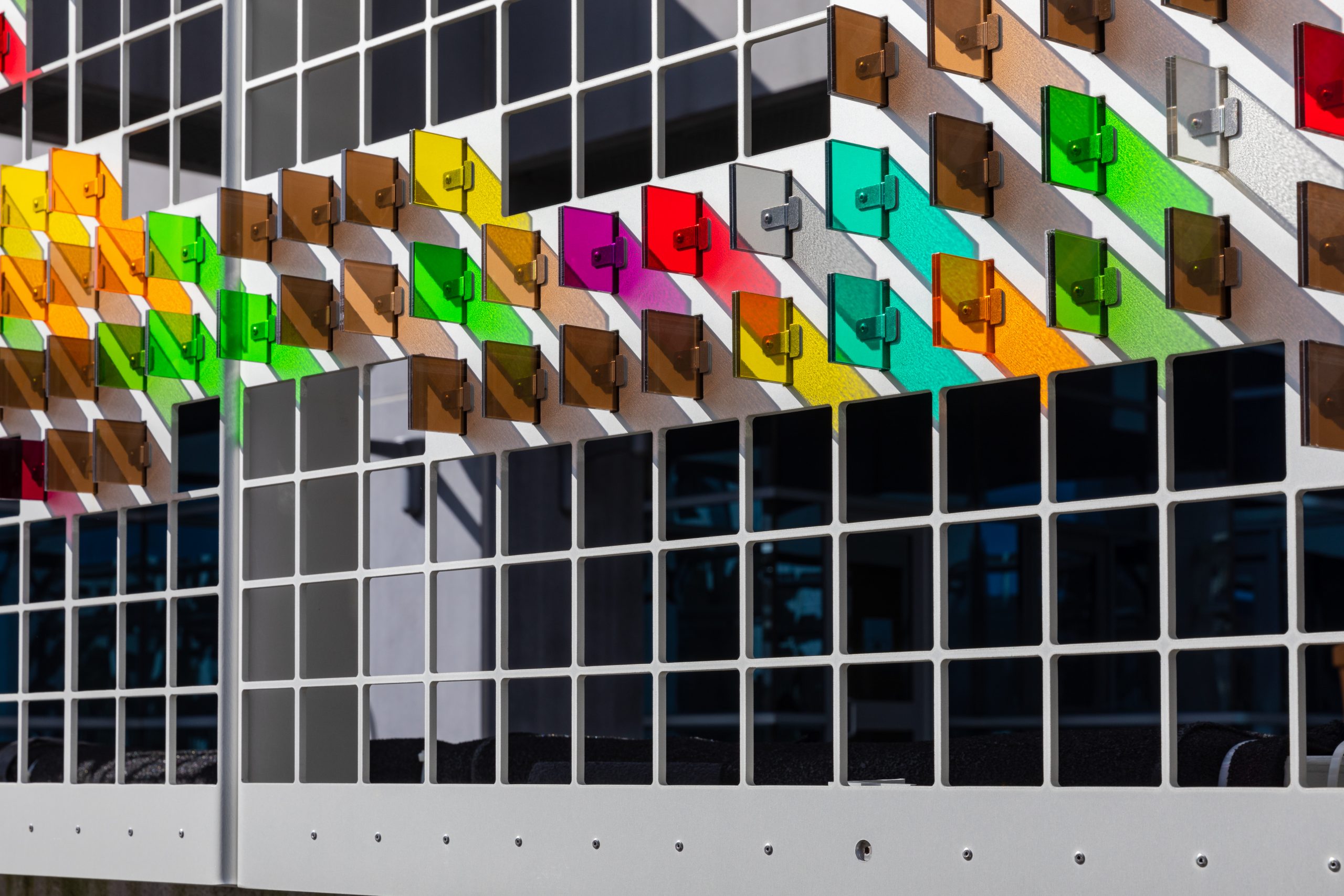

Client: Louisiana Dept of Culture, Recreation and Tourism
Location: New Orleans, CA, United States
Completion date: 2021
Project Team
Artist and fabricator
Benjamin Ball
BNS
Structural Engineering
Omar Garza
Nous Engineering
Collaborator during conceptual direction phase
Gaston Nogues
BNS
Overview
My aim was to depict Southern live oak trees, icons of the American South, as they might appear along an idyllic street in New Orleans. The panoramic work spans a children’s play space, transforming a banal fence into a two-sided mural. We borrowed techniques from the classic “Lite Brite” toy to construct the project. Functioning like the colored pegs of the toy, thousands of transparent acrylic squares, the size of playing cards, form a pointillist image of the trees. The little squares or “pixels” are like pieces of stained glass that filter sunlight and project color onto the surface of the fence. While ‘Shady Lane’ honors the storybook history of New Orleans, the shimmering pixels catch the attention of kids and those drawn to an 8-bit video game aesthetic.
The work is made of 3form Acrylic mounted on anodized aluminum panels and measures 10’ x 130’ x 5″. It is located at LSU Health School of Allied Health Professionals’ Human Development Center and commissioned by Louisiana Department of Culture, Recreation and Tourism.
Goals
Our primary objective was to create a structure that functions dually as a security fence and a kind of mural that is activated by sunlight. The site is a boundary between an elevated playground and a busy city street. Young, school-age children use the playground, which was previously enclosed by an oppressive chain link fence. The client’s goal for the artwork was for it to serve as an uplifting mural while replacing the chain link fence with a more humanized protective partition. Financial constraints limited our ability to construct a mural that is separate from a security fence, so the project had to combine these two elements into one, necessitating the integration of our design into the existing building. To accomplish this, we supported our “mural/fence” from the built-in steel posts on site. The finished work enhances the experience of the children using the playground by making a safe and friendly enclosure that protects them from the busy traffic along Tulane Avenue. And when viewed from a car or sidewalk, the work infuses the HDC building with cultural value and local identity.
Process
The completed artwork resembles a large-scale "Lite-Brite" toy that changes in appearance in relation to the viewer. To test this concept, we made mock-ups and conducted tests at different times of the day to understand the interaction between the changing sun and the tinted pixels. In constructing the artwork, we systematized the process of locating and assembling the pixels on anodized aluminum panels that form the fence. The team of designers and fabricators at BNS marked the locations of the pixels (thousands of acrylic chips) onto 23 unique panels with the help of video projectors that projected “maps” of the locations of the pixels onto each panel. The panels were designed, in house, by BNS after working closely with Precision Waterjet in Anaheim to align the design with the capabilities of their CNC waterjet cutter and sheet metal bending systems. Throughout the process, with the help of Nous Engineering, we checked the panels and adjusted them for structural stiffness. BNS then developed a crate system that housed the fully assembled panels within the trucks of our freight carrier. Once the panels arrived onsite, our team worked with A-1 Signs of New Orleans, to crane the panels into place and bolt them to the existing fence posts.